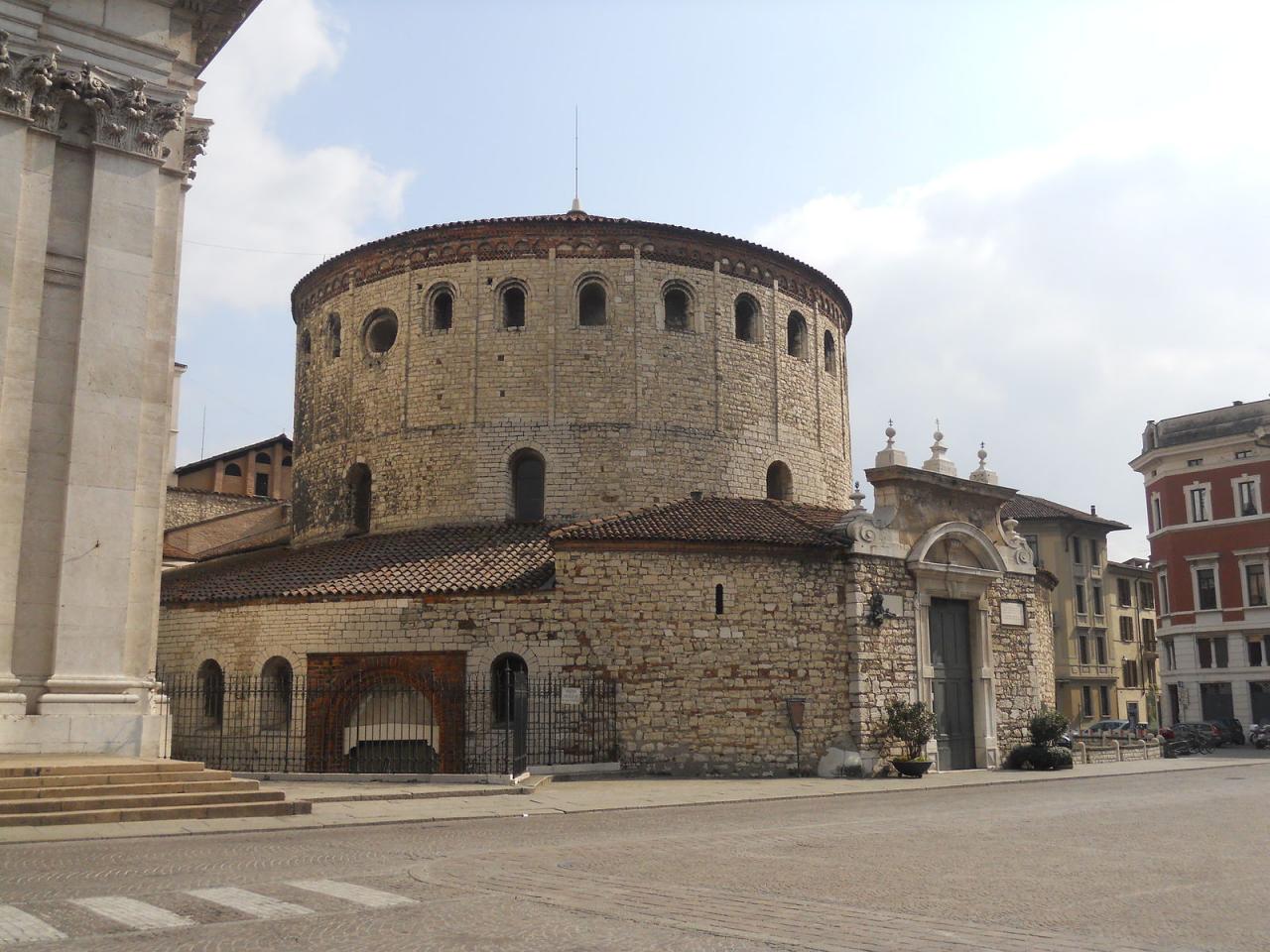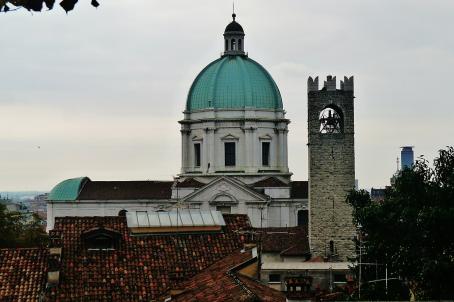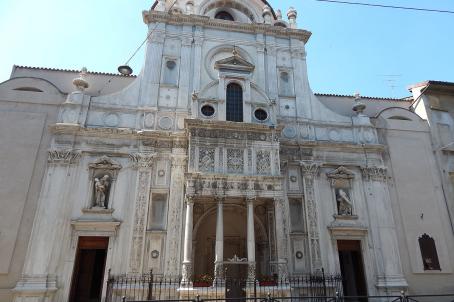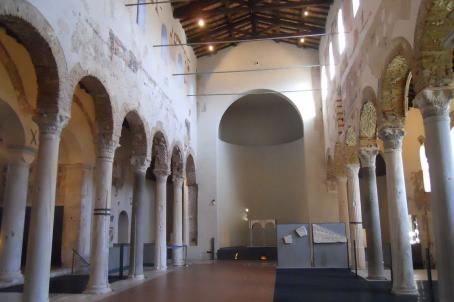Old Cathedral of Brescia
The Old Cathedral is a Romanesque building erected in the 11th century on a previous basilica. Important works were carried out there between the end of the 15th century and the beginning of the 16th century when the presbytery was enlarged, a transept was added, as well as the Chapel of the Holy Crosses. Following the sack of Brescia by the army of Gaston de Foix-Nemours in 1512, the cathedral was embellished. In 1571 the interior was reorganized according to the directives of the Counter-Reformation. Later, the restoration by Luigi Arcioni (1841-1918) led to the elimination of many Baroque additions and superstructures, restoring the imposing Romanesque volume to an essential part of its original appearance. At the end of the 20th century, the frescoes in the transept were cleaned and restored, in particular to remedy the constant and ever-present problems of humidity that afflict the building.






